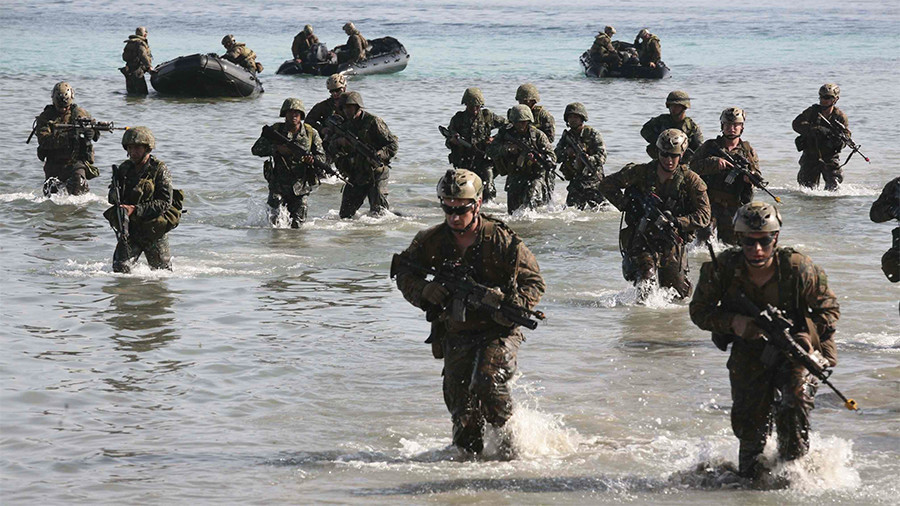Alwaght- The US mulls deploying thousands of Marine Corps Expeditionary Units to East Asia as “major muscle movement” from the West Asia to East China to “persuade Pacific nations to stand with the US” and not China.
According to a Wall Street Journal report, the US plans to boost its military presence in the East Pacific with rotating deployment of Marine Expeditionary Units, or MEUs. An MEU is a group of about 2,200 Marines who operate from amphibious assault ships and have their own aircraft, tanks, heavy weapons, and other resources. A typical deployment lasts for seven months and may involve missions on the shore like patrols or military-to-military training.
The report, citing military officials, does not say how many MEUs will be sent to the region. The US already has about 50,000 service members in Japan, almost 28,000 in South Korea, and 7,000 more in Guam.
In a related move, the Pentagon will expand the number of Marines deployed in Darwin, Australia. At the moment, 1,250 troops are stationed there in rotating training assignments lasting six months each year. The WSJ said it was not yet clear how large the number of additional troops in Australia will be.
The deployments will be made at the expense of the US military presence in the West Asia, and are in line with the new National Defense Strategy published earlier by the Trump administration, which sets countering Russia and China as a priority for the military. According to the report, the MEUs in East Asia will help the US “persuade Pacific nations to stand with the US.”
“I believe the [National Defense Strategy] and other guidance requires us to adopt a more global posture and this will shape our future naval presence, especially in the Indo-Pacific region,” said Gen. Robert Neller, the commandant of the Marine Corps.
“We have to be present and engaged to compete,” he said. The new defense strategy “will shape our future naval presence, especially in the Indo-Pacific region.”
The WSJ says the Pentagon sees the redeployment as aiming at “a global resetting of forces” rather than a “buildup for war.” The MEUs will be involved in patrols and training and be prepared to intervene “if a conflict were to break out.”
But some are critical of the plan and believe it could add to tensions with China and North Korea and essentially play on the fear card. "It plays directly into the concerns and the fears of North Korea that we're actually preparing for an attack," retired U.S. Army Lt. Col. Daniel Davis told CNBC. Davis served as an advisor to South Korea's military while on active duty and is now a defense expert at Washington think tank Defense Priorities.
The US military build-up in Asia comes as Pyongyang and Seoul are making progress towards engaging in dialogue over North Korea’s controversial nuclear and rocket programs. The two nations agreed to have a united delegation at the Winter Olympics in PyeongChang in a symbolic gesture. North Korean leader Kim Jong-un has also invited South Korean President Moon Jae-in to Pyongyang for what may become the first high-level summit between the two nations since 2007.
The rapprochement was made possible by Seoul’s decision to pause joint military exercises with the US, which Pyongyang perceives as preparation for invasion and a justification for developing a nuclear deterrent.



























